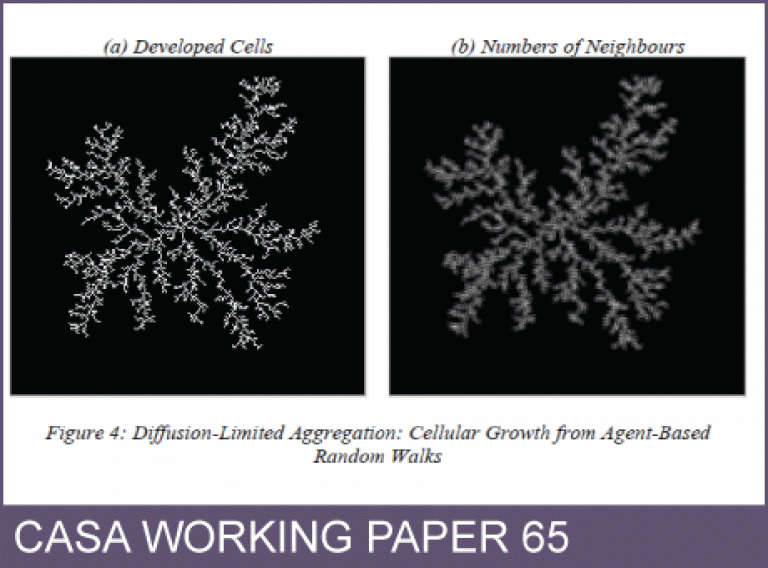CASA Working Paper 65

1 September 2003
Agents, Cells and Cities: New Representational Models for Simulating Multi-Scale Urban Dynamics
New forms of representation at a fine spatial scale, where units of space are conceived as cells and populations as individual agents, are currently changing the way we are able to simulate the evolution of cities and related systems. In this paper, we review progress to date in this field. We show how these new approaches are consistent with traditional urban models that have gone before with the emphasis no longer being on spatial interaction but on the dynamics of development and local movement.
We first introduce a generic structure for urban simulation based on ideas about spatial evolution as reaction and diffusion, and then show how problems conceived in terms of cells, or agents, or both enable new implementations of this generic model. We sketch the rudiments of cellular automata (CA) which emphasises rules of development, and agent-based models which focus on how agents respond to attributes of their environment often encoded in cellular landscapes. We develop various exemplars based on residential location to impress the way these approaches work. Three applications are then presented at very different spatial scales: first pedestrian movement at the building scale, then the evolution of systems of cities at a country scale, and finally urban growth at the city scale. In developing these approaches, we show how cellular and agent-based models have the potential for explicitly incorporating spatial interaction and transportation which is their current weakness. We conclude with proposals that formal policy analysis in this domain should always be informed by more than one approach.
This working paper is available as a PDF. The file size is 1.4MB.
Authors: Michael Batty
Publication Date: 1/9/2003
 Close
Close

